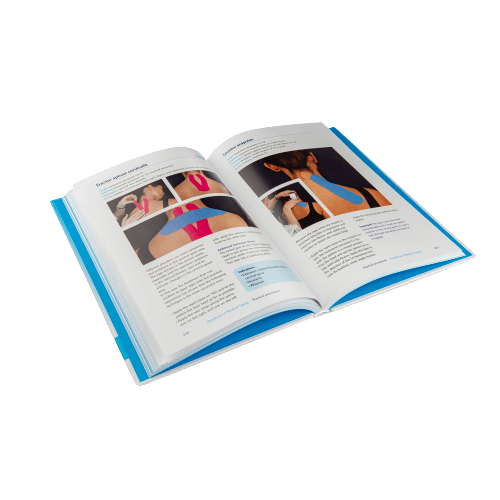Get started with these items to tape for nausea
-
CureTape® Classic Kinesiology Tape
Bestseller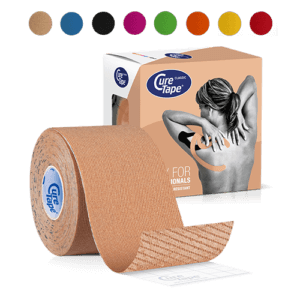 $19.95
In stockSelect options This product has multiple variants. The options may be chosen on the product page
$19.95
In stockSelect options This product has multiple variants. The options may be chosen on the product page -
CureTape® Sports Extra Sticky Kinesiology Tape
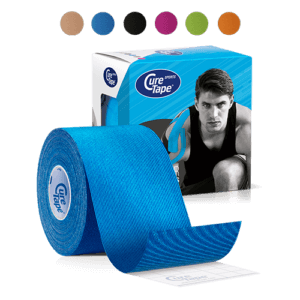 $21.95
In stockSelect options This product has multiple variants. The options may be chosen on the product page
$21.95
In stockSelect options This product has multiple variants. The options may be chosen on the product page -
CureTape® Pre-Tape Spray
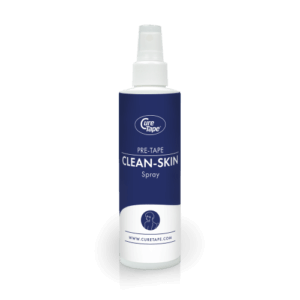 $21.95
In stockAdd to cart
$21.95
In stockAdd to cart -
Standard scissors
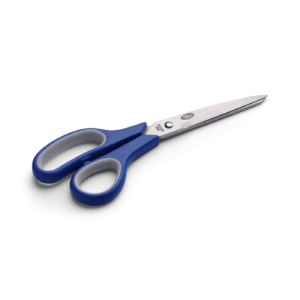 $14.95
In stockAdd to cart
$14.95
In stockAdd to cart

Christina’s advice when taping your torso
When taping your torso, it’s crucial to choose a tape that provides strong adhesion and support. That’s why I recommend CureTape kinesiology tape. For regular use, CureTape Classic or Art is ideal. However, if you’re engaging in extreme sports or swimming, opt for the extra sticky CureTape Sports variant!
Nausea caused by chemotherapy
How does CureTape® help with stomach problems?
This taping method is based on segmental taping. The body is divided into “segments,” each controlled by a specific spinal nerve that influences the organs and tissues within it. There’s a direct connection between the diaphragm, the stomach, and the area of skin where the tape is applied. The gentle “stimulus” from the tape reduces tissue tension in the stomach area, alleviating or even eliminating symptoms.
How to tape for stomach complaints and nausea?
Tape 1: 2 I-strips – ventral side (back)
Cut two I-strips of CureTape® and measure the distance in the stretched position from the xiphoid process (bottom of the breastbone, located where the ribs meet in the center of the chest). Then, extend the tape along the lower edge of the rib cage toward the sides of the body.
Both tapes start from the xiphoid process (the small, pointed area at the bottom of the breastbone where the ribs meet). To apply the tape, have the person either place their hands behind their head or stretch their arms upward. Ask them to take a deep breath in, expanding their chest fully. As they slowly exhale, gently apply the tape, following the lower edge of the ribcage downward and outward toward the sides of the body. This allows the tape to align naturally with the body’s movement and contours. Do not stretch the tape.

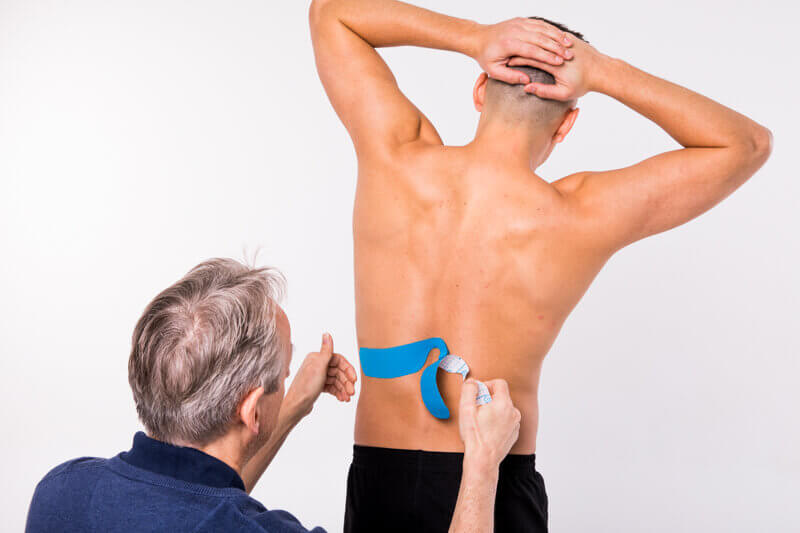
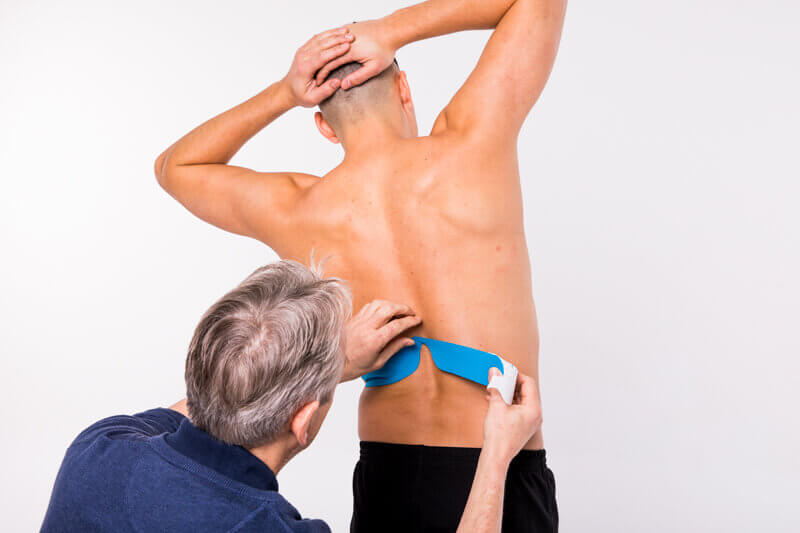
Tape 2: dorsal side (front)
Measure the length of the I-strip while the person is in a stretched position, across the width of the lower back at the level of Th12 (roughly the area at the bottom of the ribcage). To make the tape easier to apply and prevent skin irritation, cut a small notch in the center of the strip. This helps avoid folds when applying it.
To apply the tape:
- Ask the person to place their hands behind their head to gently stretch the skin.
- Apply the middle section of the tape at the level of Th12.
- As you attach the tape, have the person lean sideways away from the direction you’re applying it. This movement helps keep the skin taut.
- Repeat the process on the other side of the torso.
- Avoid stretching the tape itself during application to ensure comfort and proper function.

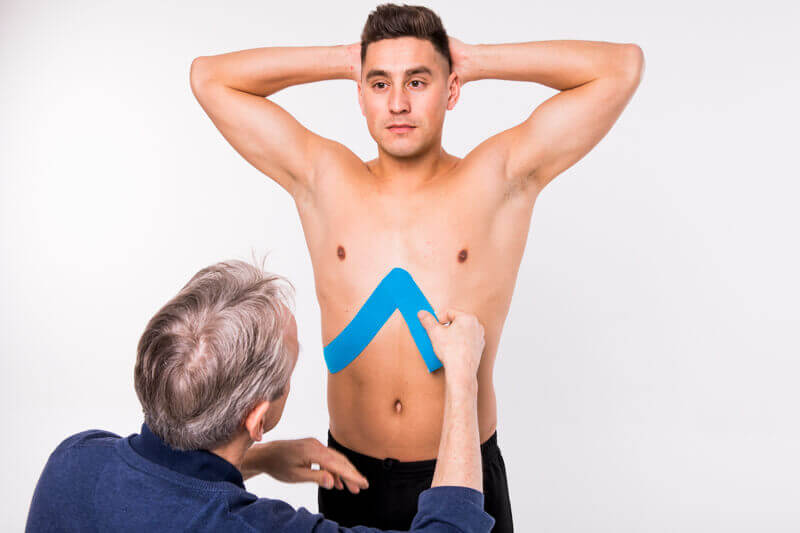
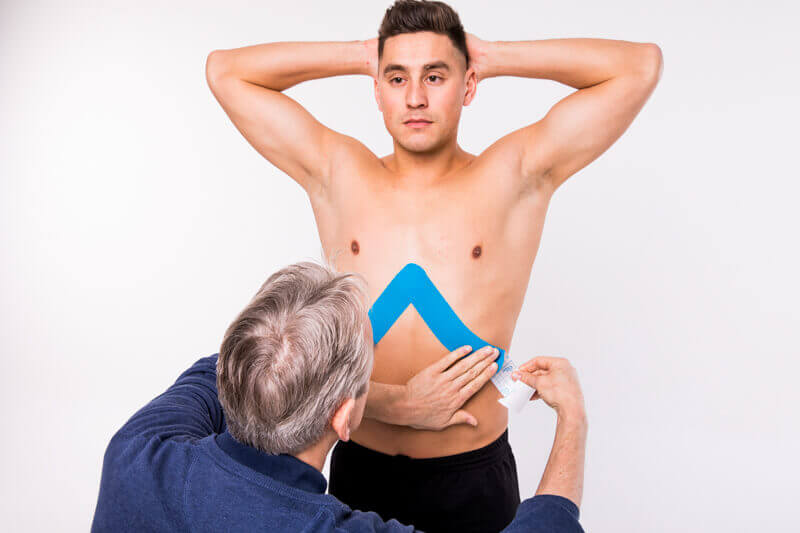
Learn how to tape
- The Ultimate Taping Guide: Focuses on self-taping for the 30 most common injuries where taping provides support.
- Kinesiology Taping Method Manual: Designed for (para medical) professionals, covering basic taping techniques and various pathologies.
- Decompressive Taping Techniques Manual: Specifically focuses on lymphatic taping methods for decompression.
What are you waiting for? Order a copy today!
THYSOL is the manufacturer of the kinesiology tape brand CureTape. As CureTape, we have been training and supplying professionals for 25 years. And consumers now know how to find us too! By manufacturing all our tapes in our own factory, we can guarantee the best quality!
Please note that the indicated tape applications and information on our website about the possibilities with kinesiology tape have not yet been scientifically proven. The statements and examples mentioned are based on long-term experiences of patients and trained therapists.
Contraindications not to tape: pregnancy, open wounds, broken bones, unexplained complaints, allergies and skin diseases, use of medication such as blood thinners, thrombosis and fever. Always apply tape in consultation with a specialist.

